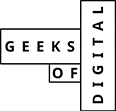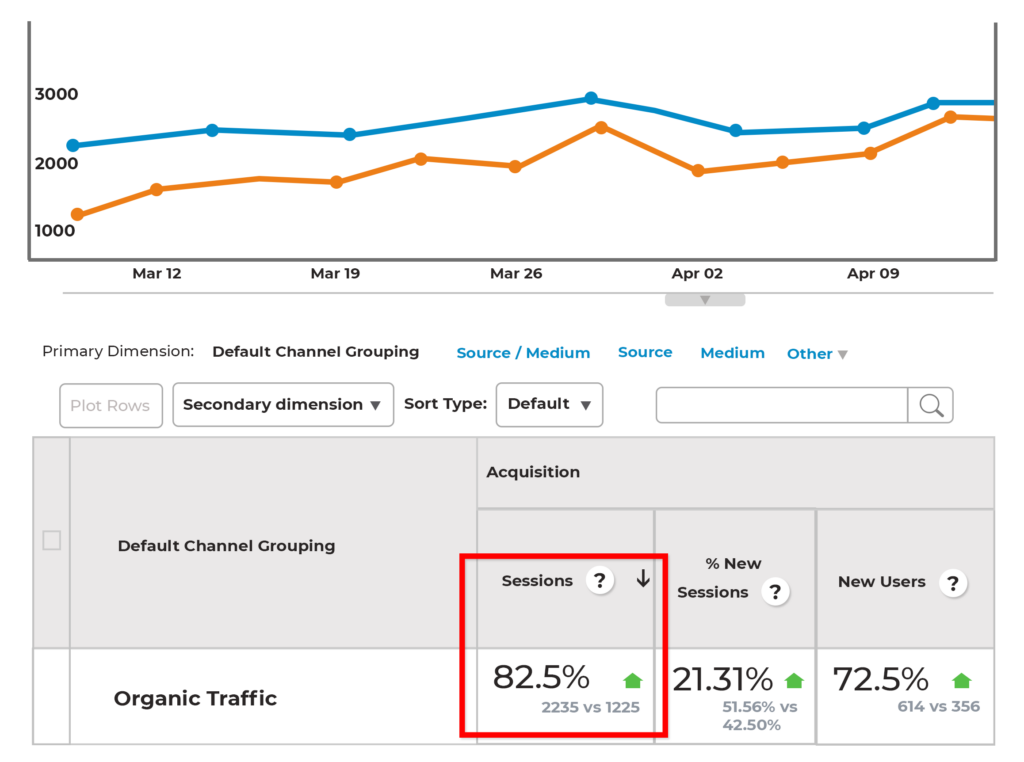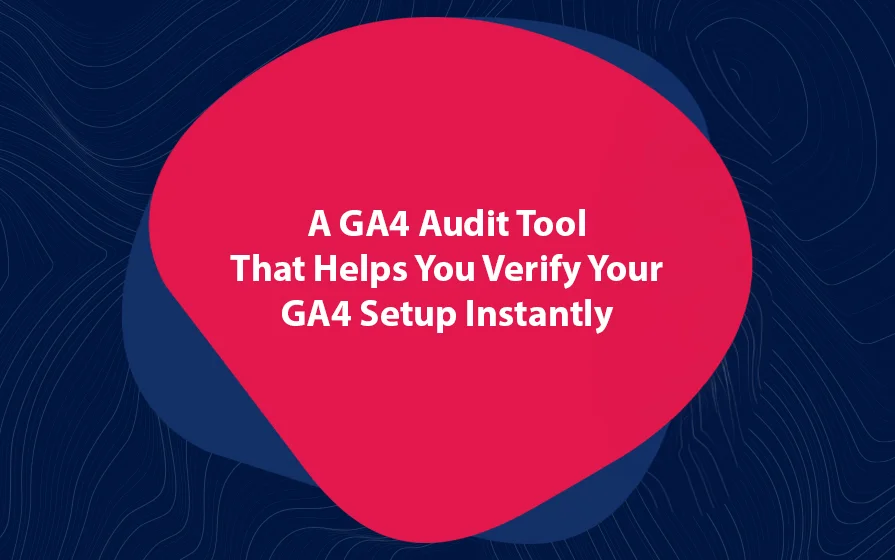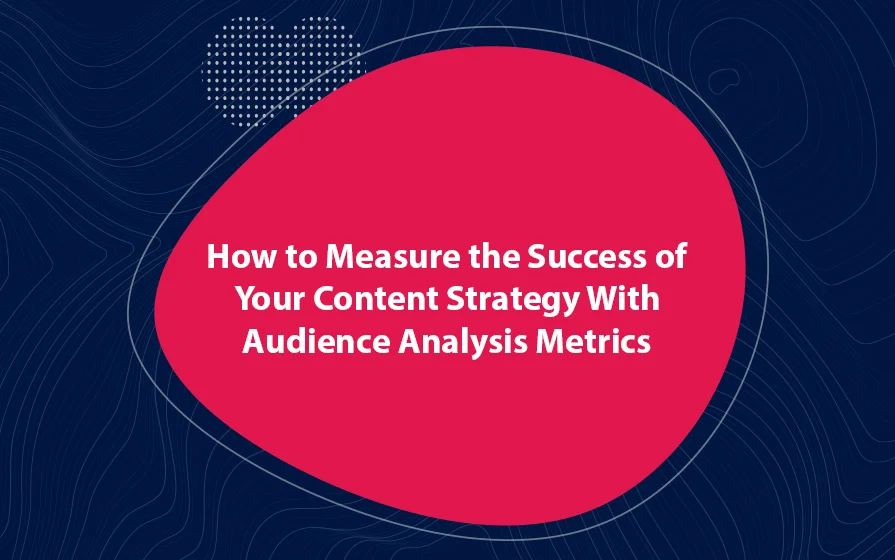It’s no secret that a great digital marketing funnel will not only attract leads but turn them into repeat customers and evangelists for your brand. But how do you create a great funnel? What is a marketing funnel?
As you are about to see that we implemented this Digital Marketing Funnel which generated:
- An 82% increase in traffic in 3 weeks straight up
- Generated 45 new leads for our agency and
- Closed 9 new accounts
There is a lot of information out there regarding digital marketing funnels that could easily overwhelm or confuse you. Some techniques may easily take you months to get your funnel together.
Bottom line?
If you want a higher conversion rate, a great content funnel and a content grid are a must. And in this guide, I’ll show you everything you need to build a quality marketing funnel.
Let’s dive right in.
What is a Digital Marketing Funnel?
A digital marketing funnel refers to a system that takes a maximum number of leads and takes them through a step-by-step flow of content.
In the end, the funnel converts them into paying customers for the business’s products and services.
According to one Harvard Business Review article, successful brands invest in content for purchase, post-purchase, renewal, and advocacy. Users typically discover legacy brands through adverts and traditional media.
On the other hand, digital brands are usually discovered through content and direct word of mouth.
But You Are Probably Wondering:
If you have a business and customers, you have a conversion funnel. Regardless of whether you refer to it as a marketing pipeline, sales pipeline, marketing funnel, conversion funnel, sales cycle, digital marketing sales funnel, social media content marketing funnel, B2B content marketing funnel, or content marketing purchase funnel, you are referring to the same thing.
To better understand how an online marketing funnel works, first picture the wide top of the funnel. It is at this point that many people are aware of your products and services. We refer to these people as potential customers or leads.
These leads move down the funnel to the narrow regions and along the way, many of them drop off. The ones that remain in the funnel will get out of the narrow end as paying customers.
Here’s the deal:
Your funnel may not be optimized to deliver the highest results. Just to reiterate, every business has a marketing funnel. There are three characteristics of a great marketing funnel:
- It has multiple steps – It is impossible to turn your prospects into leads in one step. A great inbound marketing funnel anticipates each step required to turn the prospect into a paying customer.
- It has a campaign(s) – Based on your business, your marketing funnel may involve consultancies, sales appointments, lead capture pages, visits to the business and others. Just remember that this is a process.
- It is seamless and subtle – Your marketing funnel should eliminate all friction points between the prospect getting converted into a customer.
Another thing to keep in mind is that just like everything worthwhile in life, the digital marketing funnel is not easy.
But you needn’t worry because, in this article, I will show you several shortcuts that can help you implement an excellent funnel in just 5 days.
As an experienced growth strategist, a large part of my career has been optimizing and testing marketing funnels.
At Geeks of Digital, we have built hundreds of marketing funnels for ourselves and for some of our customers. And we are very good at this.
Read on to the end of this article and you will acquire life-changing knowledge.
Why it is So Important to Create Digital Marketing Funnels?
You should never underestimate the power of a digital marketing funnel in your business. The bigger the marketing funnel in terms of leads, the bigger the funnel at the bottom. A small number of leads produces a small number of sales.
Your business could really benefit from a larger funnel at the top.
Throughout the funnel, you will engage with your prospects using a variety of ways including PR, email marketing, events, and social media. Remember that you cannot use just one of these activities. You need to implement all of them.
The marketing materials you use in the funnel will have calls to action (CTAs). CTAs are the compelling actions you ask your prospects to do so that they move down the funnel and become hotter leads.
Even after they become hot leads, it still remains important to continue marketing to them using emails, free trials, events, and campaigns. It is very unlikely that your prospects will purchase immediately. They need a number of touchpoints.
But maybe you read all this and say, “I already have a digital marketing funnel.” The question is: is it effective? To answer this question you need to consider the lead to sale conversion rate.
Why?
Among other things, this will help you determine the number of leads you need at the beginning.
A digital marketing conversion funnel is very important because it helps you understand the marketing resources you need to convert traffic into leads and leads into customers.
Types of Digital Marketing Funnels
There are three types of digital marketing funnels:
- Acquire The Audience funnel.
- Activate The Audience funnel.
- Build Users/Buyers funnel.
Before you start selling to your audience, it is vital to understand who the ideal customer is, where they are and what they will buy.
Stages Of Digital Marketing Funnel
As they move down the funnel, leads go through three primary digital marketing funnel stages.
The first is the acquire the audience funnel. The Acquire the Audience Funnel’s design should be to help your business acquire as many new customers and prospects as possible.
The second funnel is the activate the audience funnel, which is designed to help the business convert prospects and inactive buyers into recent buyers.
The third funnel is the build users/buyers funnel whose design is meant to help businesses generate revenue from indoctrinated subscribers and active buyers.
But here’s the catch:
Which digital marketing funnel you should execute in your business? What you need to focus on instead is the conversion funnel that you should be using in your business right now.
Your business needs different funnels at different times based on the prospects you are aiming for.
Look:
Each of the above-mentioned funnels excels at accomplishing one goal. Therefore, you cannot, for example, deploy an Acquire the Audience Funnel and expect to achieve the same goals as a Build Users/Buyers Funnel.
Your Acquire the Audience Funnel’s design should be such that it helps your business get more prospects, the Activate the Audience Funnel to convert prospects into buyers, and your Build Users/Buyers Funnel to help businesses generate revenue from active buyers.
So, you might be wondering: Where will you start? Here’s where the magic begins:
Building a Single Funnel
Look at your business and identify the funnel that will create the most impact for it. Then after building that funnel, you build the next one that will have the most impact on the business.
You keep moving like that until you achieve your business goals.
Which funnel will you start with?
If you need to convert more prospects into leads, start with an Acquire the Audience Funnel’s.
If you have many leads and you want to make them customers, start with an Activate the Audience Funnel.
If you need your buyers to make more purchases than they are currently doing, start by building a Build Users/Buyers Funnel.
The “Acquire the Audience Funnel” for Getting New Leads
Purpose of the Acquire the Audience Funnel
To get new customers and prospects for your business.
Why?
You probably want to break even or increase your profits.
Example of the Acquire the Audience Funnel
You might be thinking that the Acquire the Audience Funnel is where you offer your visitors a free book, a trial upgrade or value in advance. But what will give your business the most value is to identify a higher-priced offer and break it into smaller pieces.
You then will present these smaller chunks to cold prospects.
Let me explain:
You cannot start a new job and on the first day of work ask your boss for a salary increase. Your boss would probably think you are insane and terminate your employment.
But what if you start by showing a lot of enthusiasm at your job, arrive before the others, ask lots of questions and volunteer to help your colleagues?
Now when you approach your boss for a raise, they are more likely to consider it because you are valuable. In content marketing, you can achieve the effect similar to the above analogy by taking your core offer and breaking it into small chunks.
Let’s see some examples:
You teach people affiliate marketing techniques that they use to make money. Get one of the techniques and present it to cold clients at a lower cost than the whole. In marketing, this is known as a tripwire offer.
Or, let’s say you sell electronics through your business website. Create a detailed checklist of what to check for when buying new or second-hand electronics and present it to cold prospects asking for their email in return.
At Geeks of Digital, for instance, our core product is “The Conversion Machine”, which we offer to customers at $1200. However, it is difficult to sell a $1200 core offer to cold prospects.
So, we split our offer and each small offer is super-targeted to a certain potential buyer.
We then sell the small offer at a lower price than its value in the market and present it to the prospect asking for their contact information in return.
Why?
Offering a valuable product in exchange for contact information rather than money converts better.
The Acquire the Audience Funnel will bring in many leads and higher sales over the lifetime of a customer which will more than compensate for the cost of traffic.
While this funnel is ideal at getting you new leads, it will neither monetize your leads nor turn them into brand loyalists.
The “Activate the Audience Funnel” for Turning Leads into Active Buyers
Purpose of the Activate the Audience Funnel
The purpose of an Activate the Audience Funnel is to convert leads into buyers.
The Activate the Audience Funnel is different from the Acquire the Audience Funnel and the Build Users/Buyers Funnel. To understand why it is unique, we need to understand the reason for activating buyers.
After the customer makes the first purchase no matter how small, the chances of them making subsequent purchases increases exponentially.
With the Activate the Audience Funnel, your eye should always be fixated on the NUMBER of converted customers. Your goal here is NOT PROFIT. Profit will only be of concern when your activated buyers join the Build Users/Buyers Funnel.
Example of an Activate the Audience Funnel
If you want to activate a buyer, the one thing you should tell them is: Why should they buy from you right now.
You could give a number of reasons to create urgency. You could tell them that the price will increase, or that there is a limited number of products, or that you are having a sale.
In the Activate the Audience Funnel, you use a pair of powerful weapons: You first offer a significant discount that the prospect would be insane not to take. You then create a sense of urgency by showing that the offer will not be available for long.
This is how Black Friday Sales and Groupon work. The objective is to get the prospect to make the first purchase.
How can you use this information?
Give the prospects that highest possible value, at the lowest possible price you can accept.
You can still offer the same products and lead capture pages that you used in acquiring customers. The only thing you need to add is a sense of urgency and attach a small price.
So rather than creating new assets from scratch, you can simply repurpose the offer you used in the Acquire The Audience Funnel and turn them into Activate the Audience Funnel assets by adding a price and a sense of urgency.
The final step is to monetize leads and customers. To accomplish this, we need the Build Users/Buyers Funnel.
The “Build Users/Buyers Funnel” for Revenue Generation
Purpose of the Build Users/Buyers Funnel
The purpose of the Build Users/Buyers Funnel is to bring in the highest possible revenue for you.
Example of a Build Users/Buyers Funnel
If you want your customers and leads to purchase high-dollar products from you, use the Magic Question Formula.
So, what’s the Magic Question Formula?
This is where you start your offer with the words “Want some help…” This formula works regardless of your industry or niche. For example:
Want some help creating a great sales funnel?
Want some help learning how to code?
Want some help creating a retirement plan?
Use this question as your landing page title and link it to a video that explains the product or service you offer. In the video, make sure you do two things:
Ask the prospects to deposit money to book a consultation meeting.
Ask them to fill out a questionnaire which will give you information on how to close them.
Notice that using the “Want Some Help” would be a total turnoff for cold prospects. This is reserved for the bottom of the funnel content.
Like in our analogy on asking for a raise at a new job, using a digital marketing funnel in the wrong context would be disastrous.
How to Implement this Strategy
Day 1 – Create A Market Research Blueprint.
The first stage of creating your digital marketing funnel is to have your market research blueprint in place so that you know which keyword to focus on, how to create a proven topic, build your first lead magnet and create a Tripwire offer that can lead to your core offer.
Day 2 – Start your content production with Advanced Copywriting Formula.
Once you are done with the market research blueprint, you should have the following elements in place:
- A Medium Tail Keyword to focus upon
- A Lead Magnet Idea
- A proven topic
- A Tripwire Offer Email Automation
- A Landing Page Idea
- An outreach game plan
By the second day, the production of the above 5 elements should start. You can either put your content team at work for this or hire content marketing funnel specialists to get the ball rolling for you.
Day 3: Create an information grid for internal linking.
This is the most critical day/step in creating your content marketing funnel.
Remember that the funnel that you are creating will have great value in SERPs and for that, if your internal linking is strong you can build epic funnels in no time.
An information grid helps you understand the spread of the content of your website that you can tie together for search engines. The more internal links you have, the better you get at rankings.
Day 4: Setup your analytics and automation.
By day 4, your content and design should be ready for you to review and finalize, however, it is highly recommended that you measure its results. You should probably go with Google Analytics if you are building your first funnel, or some other advanced tools available in the market. For automation start with basics like Mailchimp, Active Campaign or Get Response as they are easy to use and you can start from ground up with 8 to 10 different automation.
Day 5: Publish, Promote and go for outreach plan
On the final day, you should be publishing your content funnel to kickstart the promotion and outreach game plan. It is critically important to build your promotion game plan well in advance because it will let you test faster and optimize earlier in establishing the most effective funnel.
Your outreach plan should consist of the Link creators who will provide you backlinks that will increase the visibility of your content piece. You can either do it yourself or hire a digital marketing funnel specialist to get the ground work done.
So what do you get after implementing the digital marketing funnel?
We implemented this strategy at Geeks Of Digital and generated quite overwhelming response. At the end, one thing that really made the difference was, how well the content was built. We did an extensive market research through our market research blueprint and came up with a full funnel idea that worked for us.
Here is a snapshot of our results after we implemented the first marketing funnel.
- An 82% increase in traffic in 3 weeks straight up.
- Generated 45 new leads for our agency and
- Closed 9 new accounts
Creating Information/Knowledge Grid To Build Digital Marketing Strategy
What is a Knowledge Grid
Knowledge grid is a tool you use to plan the content that you will produce based on your target audience and building a robust knowledge network within your website.
Even as Google’s algorithms keep evolving, the key theme remains a focus on high-quality content. Google expects that your written copy is of high quality and has engaging imagery, videos, graphics, and photographs. On top of it, if your website has entire knowledge repository of a particular topic then sky is the limit.
If your website has poor quality content, you can bet that it will struggle to rank on Google SERPs. However, creating high-quality content to satisfy Google’s and your audience’s needs is not that easy.
The most difficult thing is knowing where to start.
How to create Knowledge Grid?
We know that SEO is very taxing when it comes to building information and knowledge structure. But remember, if you are in for a long play then Knowledge Grid will scale your business like no other.
Understand Your Target Audience
You really need to understand your target customers. As such, descriptions such as “our target customers are small businesses” will not suffice. You should have a specific set of audience to whom the content should be directed.
To be specific about the target audience, think of the individual people you talk to in your sales meetings. Are they marketing managers, CEOs, or CFOs?
Don’t stop there. Get into even more detail. If you normally meet with CFOs, what were their main questions? Did they behave in a certain manner during the meeting? What ways did they discover about you? What is their online behavior?
Do they have a lot of time on their hands? Do they use mobile phones more than computers?
You need to be this specific. Only through this will you be able to create a useful image of that person. For the best results, consider involving your whole team, in particular, the sales team.
Conduct a mind mapping exercise with your team and deal with one persona at a time.
Create Audience Personas
Creating audience personas is so important that web developers use it to create a great online experience. Savvy marketers use audience personas to really understand their target audience.
A persona is an individual you use to represent a segment of your audience. Create a persona as a representative of that segment. Be so specific that you give the persona a name, an age, a title, and a photo.
Drill down to the specifics on how they spend their time, the gadgets they use, their needs and motivations.
Why is this important?
A persona helps you place a real face to the audience segment you are speaking to. It allows you to create content that is specific to them because you understand their needs.
If you’ve named your persona Jason, you will ask yourself questions like: “Would Jason read this?”
Now Consider the Message You Want to Share
Understanding your audience is only the first step to planning new content for your website. You need to know the messages that you want to communicate with them. These messages are what we refer to as “brand stories.”
To determine a brand story, ask yourself the following questions:
What would you like your prospects to know?
How do you want to impress them?
Your sales team will be instrumental in completing this exercise.
Then, go to each brand story and ask yourself “so what.” This enables you to understand what the brand story means for the audience. It allows you to make the brand story even more useful.
For example:
Let’s say that your business has acquired a new machine. That’s your brand story because you want customers to know about.
Now, let us ask “so what?” It turns out that with the new machine, you will be able to deliver products to the customer faster than you previously did.
So now, the real brand story is not that you have acquired a new machine. Rather, it is the benefits the customers will experience because you acquired the machine.
Create the Content Grid
Now that you know who you’re talking to and the messages you will communicate, now it’s time to create a content grid. You can use any program of your choice, be it Excel, Word, PowerPoint or even Google Docs.
As shown in the table above the personas run along the top while the brand stories run along the left.
The next step is to fill the grid by cross-referencing the brand stories and the personas.
Why?
Because this helps you come up with ideas of the specific content that would be relevant to each persona.
Now it’s your turn. Build your own content grid and keep refining it to meet your content strategy. The techniques outlined above will really help you regardless of whether you are struggling with content creation or want to collaborate in content creation.
To Wrap It Up
In the end, you will need all the three funnels: Acquire the Audience Funnel, Activate the Audience Funnel, and Build Users/Buyers Funnel.
The key is to start with the funnel that promises the greatest results now. The remaining two funnels, you will implement as time goes by.
After you have created and optimized all your three funnels, you will be getting new leads, activating them into buyers and then making them high-ticket multi-buyers.
There you have it! An actionable strategy that you can implement in 5 days to create a digital marketing funnel.
What do you think? Was this guide helpful? We welcome your views and opinions.






